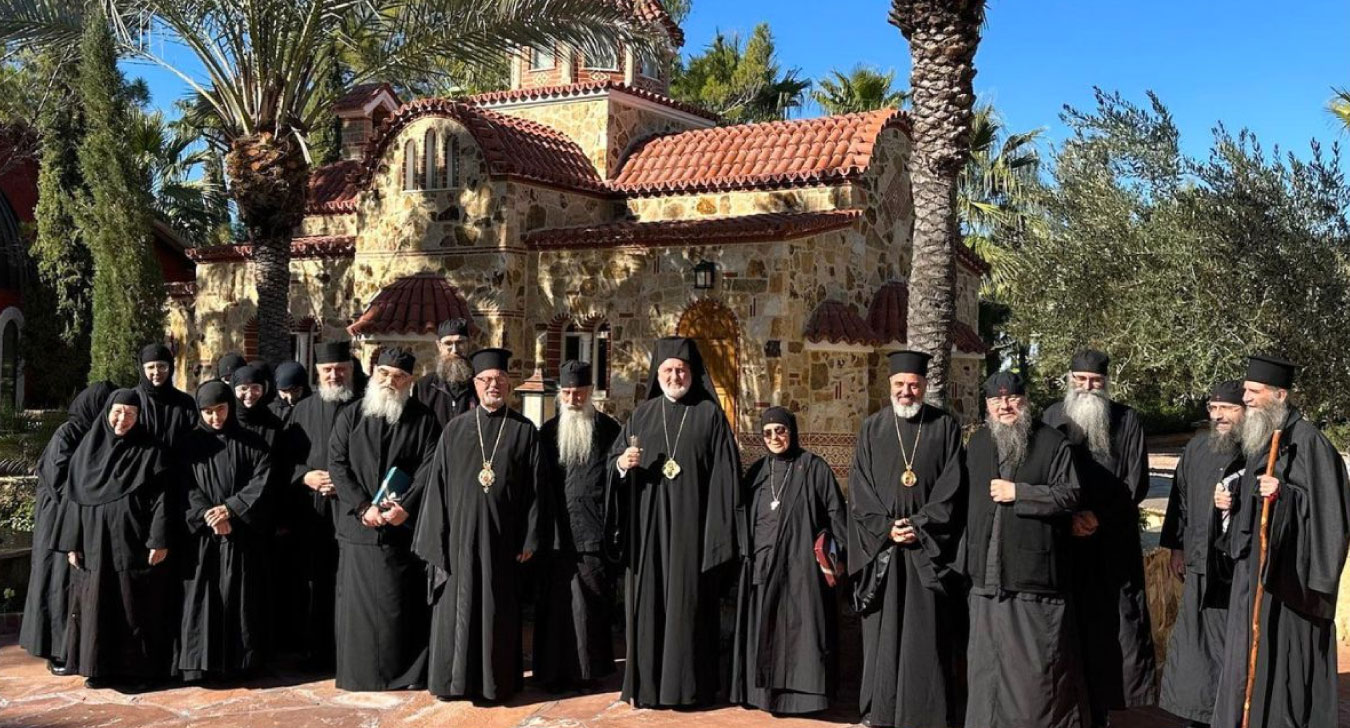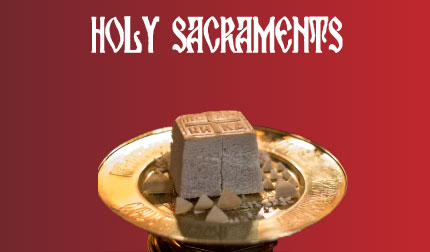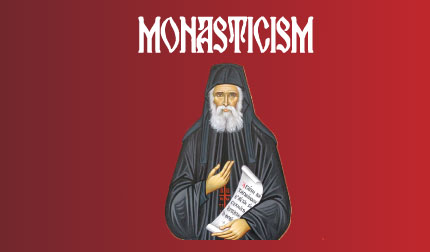The Monastic Calling

Orthodox Monasticism and the Spiritual Legacy of Mount Athos
Orthodox monasticism stands as a pillar of spiritual life within the Orthodox Church, embodying a living witness to the Gospel through prayer, asceticism, and communal devotion. Rooted in the earliest Christian tradition, it represents the pursuit of holiness and union with God, offering a life wholly dedicated to the imitation of Christ.
The Essence of Orthodox Monasticism
Monasticism in the Orthodox tradition is often described as "angelic life" on earth. It reflects the highest form of Christian discipleship, where men and women renounce worldly attachments, dedicating themselves to a life of prayer, fasting, and humility. This path is not undertaken as an escape from the world but as a deeper confrontation with spiritual realities, with the goal of acquiring divine grace and attaining theosis — union with God.
Saint Basil the Great, one of the founding figures of communal monasticism, emphasized that the essence of monastic life is grounded in love: love for God and love for neighbor. Monastics embody the words of Christ: "Whoever desires to come after Me, let him deny himself, and take up his cross, and follow Me" (Mark 8:34). Through self-denial and unceasing prayer, monks and nuns strive to cultivate purity of heart, transforming their inner life to reflect the image and likeness of God.
At the core of monasticism lies the pursuit of spiritual warfare. The monastic life is a struggle against the passions — pride, anger, lust, and greed — which cloud the soul’s vision of God. Monastics engage in ascetic practices, such as fasting, vigils, and physical labor, not to punish the body but to sanctify it, recognizing the human person as a unity of body and soul. This holistic approach underscores the Orthodox belief that salvation is not a disembodied state but the transfiguration of the whole person.
Forms of Monastic Life
Orthodox monasticism is expressed in various forms, each reflecting a different path toward spiritual growth:
- Cenobitic Monasticism (Communal Life):
In this form, monks or nuns live together in a monastery under the spiritual leadership of an abbot or abbess. Life is structured around common prayer, work, and study, following a shared rule. Cenobitic monasticism reflects the early Christian model described in Acts 4:32, where believers lived with one heart and one soul, holding all things in common. - Eremitic Monasticism (Hermit Life):
Some monastics, after years in community, retreat to the wilderness as hermits to devote themselves to solitary prayer. The eremitic life mirrors the examples of the Desert Fathers, such as Saint Anthony the Great, who sought isolation to encounter God in the silence of the heart. - Skete Life (Semi-Communal):
A skete is a form of monastic living that blends elements of communal and solitary life. Monks live in small cells, praying individually, but gather on feast days for communal worship. This balance allows for personal spiritual struggle while maintaining the support of a brotherhood.
The Monastic Vows and Symbols
Upon entering the monastic life, individuals take three solemn vows:
- Poverty: Renouncing personal possessions, trusting in divine providence.
- Chastity: Committing to purity of heart and celibacy as a sign of undivided devotion to Christ.
- Obedience: Submitting to the spiritual authority of the abbot, recognizing in this obedience the will of God.
The monastic habit, typically black, signifies death to the world and the beginning of a new life in Christ. The tonsure — the cutting of hair — symbolizes the monastic’s offering of their life as a sacrifice to God.
Mount Athos: The Heart of Orthodox Monasticism
Mount Athos, known as the "Holy Mountain," stands as the most prominent center of Orthodox monasticism. Located in northern Greece, this monastic republic has been a spiritual beacon for over a thousand years, attracting monks from across the Orthodox world.
Mount Athos is unique in that it functions as an autonomous monastic state, governed by its own council of abbots. The peninsula is home to twenty main monasteries, numerous sketes, and hermitages, housing over 2,000 monks. Athos is consecrated exclusively to the Mother of God, who, according to tradition, visited the mountain and blessed it as her own garden. Women are not permitted to enter, preserving the mountain as a space of undivided spiritual focus.
Spiritual Life on Mount Athos
Life on Mount Athos revolves around the cycle of prayer, with the Divine Liturgy and the Hours forming the rhythm of the day. The monks rise before dawn, engaging in prolonged vigils, psalmody, and the Jesus Prayer — a short invocation of Christ’s mercy. This continuous prayer is seen as the heart of Athonite spirituality, echoing the exhortation of Saint Paul: "Pray without ceasing" (1 Thessalonians 5:17).
Athonite monks also practice rigorous fasting and manual labor, cultivating the land and copying manuscripts. Yet, despite their isolation, Athos remains deeply connected to the world through its role as a center of spiritual guidance. Pilgrims flock to the Holy Mountain, seeking confession, healing, and direction from experienced spiritual elders.
Icons and Hesychasm
Mount Athos is renowned for preserving the tradition of hesychasm, a mystical form of prayer that seeks the direct experience of God’s uncreated light. Hesychasts, through the disciplined repetition of the Jesus Prayer, enter into deep stillness, experiencing divine illumination. This practice was defended by Saint Gregory Palamas, whose theological writings established hesychasm as a cornerstone of Orthodox spirituality.
The Holy Mountain is also famed for its iconography, with monasteries housing miraculous icons and rare relics. Athonite iconographers continue the ancient tradition of creating sacred art, viewing their work as a form of prayer and spiritual transmission.
The Legacy of Mount Athos
Mount Athos stands as a living testament to the transformative power of Orthodox monasticism. Its monasteries have produced countless saints, including Saint Silouan the Athonite, whose writings speak of the boundless mercy of God. Athos remains not only a guardian of Orthodox tradition but a prophetic sign of the Kingdom of God.
The significance of Athos lies not in its isolation but in its role as a spiritual lighthouse for the entire Church. The monks, though withdrawn from the world, intercede constantly for its salvation. In this sense, Mount Athos serves as a reminder that the path to holiness is open to all — for, as Saint Seraphim of Sarov proclaimed, "Acquire the Spirit of Peace, and a thousand souls around you will be saved."
Orthodox monasticism, exemplified by Mount Athos, calls all believers to deeper repentance, prayer, and love, reflecting the eternal call to be transformed into the likeness of Christ.
Quick Facts About Mount Athos
- Mount Athos is an autonomous monastic state within Greece, governed by the "Holy Community," a council composed of representatives from the 20 monasteries on the peninsula. It operates under the spiritual jurisdiction of the Ecumenical Patriarch of Constantinople but maintains self-governance in its internal affairs.
- Mount Athos is renowned for its practice of hesychasm, a mystical tradition of prayer and stillness that seeks direct experience of God's uncreated light. This spiritual practice was championed by Saint Gregory Palamas and remains central to Athonite life.
- The Holy Mountain is home to 20 historic monasteries, many dating back to the 10th century. These monasteries house invaluable relics, manuscripts, and icons, including miraculous icons believed to offer divine protection and healing.
- Mount Athos was designated a UNESCO World Heritage Site in 1988 due to its historical, religious, and cultural significance. It is considered one of the most important centers of Orthodox Christian spirituality and a living monument of Byzantine heritage.
- Known as the "Garden of the Theotokos" (Mother of God), Mount Athos has prohibited women from entering for over a thousand years. This tradition is rooted in the belief that the Virgin Mary consecrated the land, and it preserves an atmosphere of spiritual focus and asceticism.
More In-Depth
The Holy Sacraments
In the Orthodox Church, the sacraments — often referred to as the Holy Mysteries — are divine means through which the grace of God is imparted to the faithful. These Mysteries are not simply rituals but encounters with the living Christ, guiding the believer into deeper union with God and participation in the life of the Church.
Holy Confession
Confession is not merely the recounting of sins but a profound return to the embrace of the Father, echoing the journey of the prodigal son. It is an encounter with Christ, who through the priest as His living icon, receives us with compassion, eager to restore the garment of grace.
Monasticism
Monasticism in the Orthodox Church is the path of total dedication to God through prayer, asceticism, and communal or solitary life. It is often described as “angelic life” on earth, where men and women renounce worldly attachments to seek communion with God in purity of heart.





